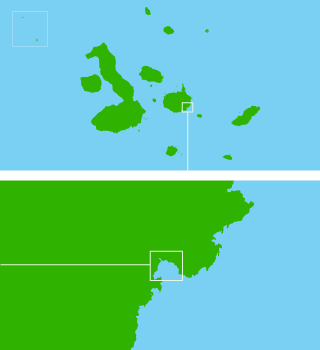

| EL GARRAPATERO |
Santa Cruz Island |

Permitted Uses:  Interpretive and recreational tours Interpretive and recreational tours  ourist Activities authorized by the GNPS ourist Activities authorized by the GNPS  Photography and filming Photography and filming  Camp previously approved by the GNPS Camp previously approved by the GNPS

It is located 19 km northeast of Puerto Ayora. You can arrive by a road that leads through Bellavista - El Cascajo - The Garrapatero (50 minutes) and by sea (20 minutes).
The newly extended and improved highway, goes from the mine "El Cascajo" in the agricultural zone and enters the Park with an area of 4.8 km. Carrozables. At the end of this road is a natural parking; from here you must walk along a path of 870m to arrive at the beach.
The trail is easily accessible, there are no slopes in excess of 10% and is mostly covered with gravel.
A ranger patrols daily from 07h00 to 18h00 and will tell you the rules to keep in mind when visiting the site.
Camping is permitted at the site with prior authorization from the Public Use Unit.
You can use the grill to light fires, you should take your own coal. Visitors must return garbage to town.
Among its main attractions are a white sandy beach of 1500 m and a pool with flamingos and White-cheeked Pintail ducks located 100 m from the beach.
The species Hippomane mancinella (manzanillo or Manchaneel tree), present in the latter stages of the path, should be treated with care because it has a poisonous fruit.
The vegetation covering the sides of the walking path belongs to the arid zone, the main species being, Jasminocereus thouarsii (cactus candelabro), Croton scouleri (Chala), Prosopis juliflora (mesquite), Cordia lutea (Muyuyo), Bursera graveolens (Palo Santo) Scutia pauciflora (thorn shrub) and Maytenus octagona (arrayancillo).
The fauna of the site is represented by birds such as mockingbirds (Nesonimus parvulus), finches, White-cheeked Pintail ducks (Anas bahamensis) and flamingos (Phoenicopterus ruber). At the extreme end of the beach; sally lightfoot crabs, oystercatchers (Haematopus ostralegus) and occasionally marine iguanas (Amblyrynchus cristatus) can be found.
|


![]()


![]()